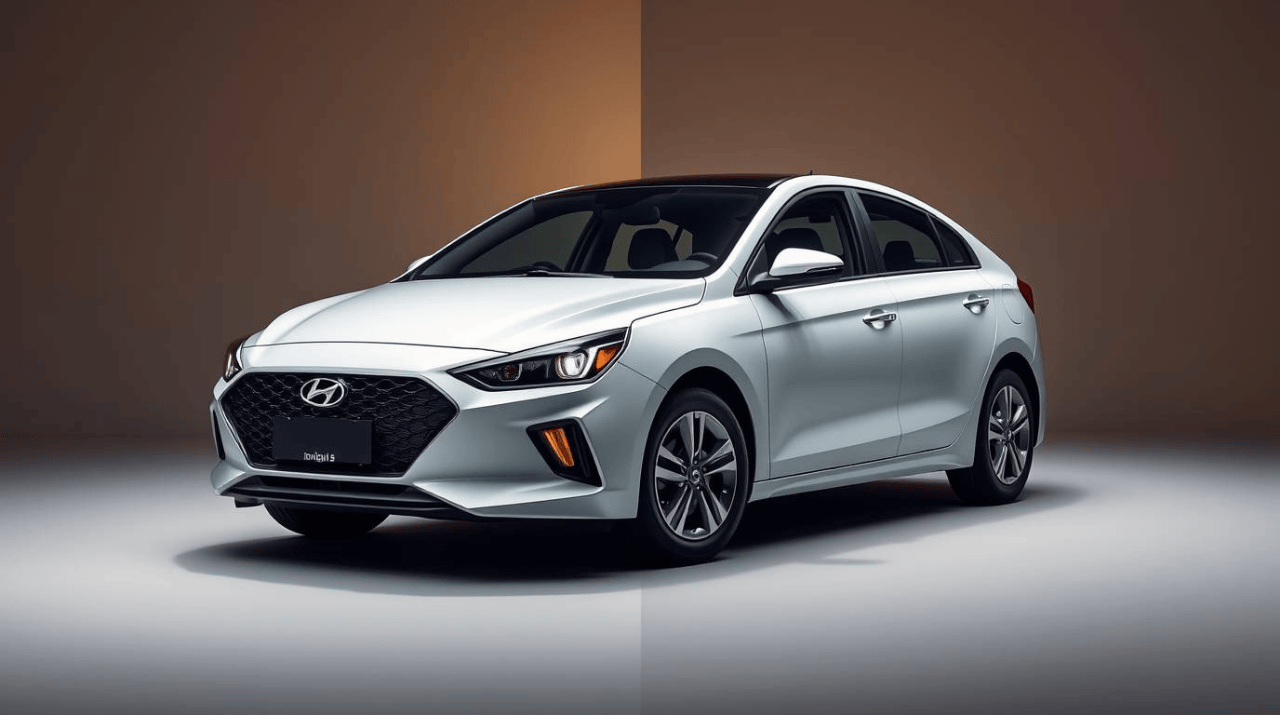It’s not every day that a car manages to blend futuristic design with everyday practicality, but Hyundai’s Ioniq 5 seems to have cracked the code. At first glance, it doesn’t scream “electric SUV” in the traditional sense—there’s a retro-futuristic charm going on, almost like someone pulled a concept car straight from an auto expo and decided, “Yep, let’s put this on the road.” The kicker? It’s not just about the looks. With a claimed 507 km range on a single charge, the Ioniq 5 is starting to look like the kind of EV that could genuinely replace your petrol or diesel ride without the anxiety of constantly hunting for charging stations.
What Makes the Ioniq 5 Stand Out
Hyundai didn’t build this car to just join the EV conversation; they clearly wanted to set the bar higher. The Ioniq 5 sits on the company’s dedicated E-GMP (Electric Global Modular Platform), which gives it both flexibility and efficiency. It’s bigger than it looks in pictures—wider than a Tucson and riding on a long wheelbase, which means roomy interiors, flat floors, and the kind of space you’d normally associate with a luxury SUV.
That range number—507 km (WLTP rated)—isn’t a marketing gimmick either. Real-world tests have shown the Ioniq 5 can comfortably cross 400+ km depending on driving style and conditions, which is still more than enough for most people’s weekly commutes and even the occasional road trip.
Performance and Charging
The Ioniq 5 isn’t just a pretty face with a big battery. Depending on the variant, you get either rear-wheel drive or all-wheel drive, with power outputs ranging from a sensible 168 hp to a punchy 320 hp. That AWD version? It can sprint from 0–100 km/h in just about 5 seconds. Not bad for a family SUV that can also haul luggage, kids, and probably a golden retriever.
But the real magic lies in the charging tech. Thanks to its 800V architecture, the Ioniq 5 can charge from 10% to 80% in around 18 minutes—provided you find a 350kW ultra-fast charger. Even on a more standard 50kW DC charger, you’re looking at roughly an hour to get back on the road. For home setups, a regular AC wall box can top it up overnight, making it as simple as plugging in your phone before bed.
Here’s a quick snapshot:
| Feature | Hyundai Ioniq 5 |
|---|---|
| Range (WLTP) | Up to 507 km |
| Battery Options | 58 kWh / 72.6 kWh |
| Charging (350kW DC) | 10–80% in ~18 mins |
| Power Output | 168–320 hp |
| 0–100 km/h | ~5.2 seconds (AWD) |
| Platform | E-GMP |
Interior and Tech
Step inside, and it’s clear Hyundai wanted this to feel less like a car and more like a lounge on wheels. The sliding center console, adjustable rear seats, and eco-friendly materials (think recycled plastics and plant-based textiles) give it a very “new-age premium” vibe. The twin 12.3-inch screens running the infotainment and driver display are slick but intuitive, and thankfully, Hyundai hasn’t gone the full “Tesla route” of removing every button. You still get some physical controls for climate, which is a small but much-appreciated detail.
Another cool party trick? The Ioniq 5 offers Vehicle-to-Load (V2L) technology, meaning it can act as a giant power bank. You can plug in your laptop, camping gear, or even another EV in an emergency. Imagine hosting a barbecue powered by your car—it’s that kind of flexibility that makes people grin.
Price and Competition
In markets like the US and UK, the Ioniq 5 starts at a fairly competitive price point, undercutting some premium rivals while offering similar or better tech. In India, it launched at around ₹45–48 lakh (ex-showroom), which positions it more as a premium offering rather than mass-market. But considering what you’re getting—long range, fast charging, and premium fit and finish—it doesn’t feel overpriced.
Its competition includes the Kia EV6 (which shares the same platform), Tesla Model Y, Ford Mustang Mach-E, and Volvo XC40 Recharge. Each has its strengths, but the Ioniq 5 stands out with its unique design, practical cabin, and ultra-fast charging.
The EV Shift: Why It Matters
Governments across the globe are pushing hard on EV adoption, with incentives, tax breaks, and stricter emissions rules (see U.S. Department of Energy and UK government EV policies for reference). Cars like the Ioniq 5 aren’t just status symbols; they’re proof that EVs can be mainstream, practical, and genuinely enjoyable to drive.
And honestly, that’s what makes this car so special. It’s not trying too hard to be futuristic. It’s just well-thought-out, beautifully executed, and ready for real-world use.
FAQs
What is the real-world range of the Hyundai Ioniq 5?
Most drivers report between 400–450 km depending on conditions, though the official WLTP figure is 507 km.
How fast can the Hyundai Ioniq 5 charge?
With a 350kW DC charger, it can charge from 10–80% in about 18 minutes.
Does the Ioniq 5 qualify for government EV incentives?
Yes, in many regions including the US and UK. Check U.S. EV tax credits and UK EV grants for eligibility.
Is the Hyundai Ioniq 5 bigger than the Kona Electric?
Yes, it’s significantly larger, with more cabin and boot space, closer to mid-size SUVs like the Tucson.
Can the Ioniq 5 power appliances?
Yes, thanks to its Vehicle-to-Load (V2L) feature, you can power gadgets, tools, or even small appliances.
